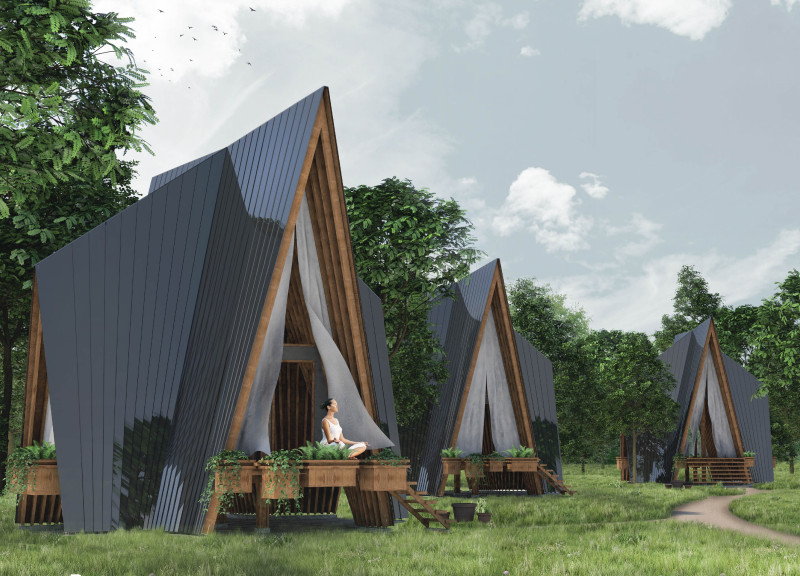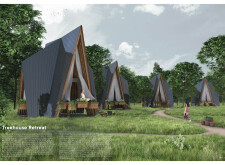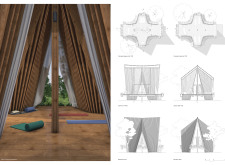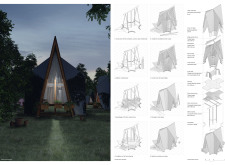5 key facts about this project
The project presents an innovative architectural solution designed to blend functionality with sustainability in its designated context. Situated in [insert location], this building serves multiple purposes, emphasizing community interaction while ensuring environmental efficiency. The architecture integrates seamlessly with its surroundings, promoting an inclusive atmosphere conducive to both personal and communal activities.
The building features a modular structure that optimizes space utilization without compromising aesthetic integrity. Its design incorporates open-plan spaces that encourage flexibility, allowing for various configurations to support diverse activities. The layout facilitates easy circulation and access, aligning with modern principles of user-centered design. Careful attention is given to natural light and ventilation, enhancing the indoor environment and reducing the need for artificial lighting and climate control.
Unique Approach to Materiality and Form
One of the standout aspects of this project is its thoughtful selection of materials, which not only uphold structural integrity but also contribute to thermal performance. The use of locally sourced materials minimizes the carbon footprint associated with transportation, aligning with sustainable design practices. Exterior cladding made from [insert specific materials] not only provides durability but also offers visual appeal, marrying functionality with a contemporary aesthetic.
The form of the building reflects a contemporary design language that breaks from traditional typologies. Distinctive rooflines and varied facade treatments provide a dynamic visual experience while improving the building's performance in wind and rain. The incorporation of green roofs and vertical gardens fosters biodiversity, enhancing urban ecology and encouraging engagement with nature.
Integration of Technological Solutions
The project integrates advanced technologies to increase efficiency and sustainability. Smart building systems monitor environmental conditions, adjusting operations in real-time to optimize energy use. These systems include automated shading to reduce heat gain while maximizing daylight, as well as systems for rainwater harvesting and greywater reuse. The design not only addresses energy needs but also establishes a resilient framework capable of adapting to future environmental challenges.
In summary, the project stands as a pertinent example of modern architecture where thoughtful design, materiality, and technology converge. For deeper insights into the architectural plans, architectural sections, and innovative architectural ideas that formed the basis of this design, readers are encouraged to explore the project presentation thoroughly. An in-depth examination will reveal the nuanced strategies employed throughout this architectural endeavor, shedding light on how this design sets itself apart in an increasingly homogenous landscape.






















































